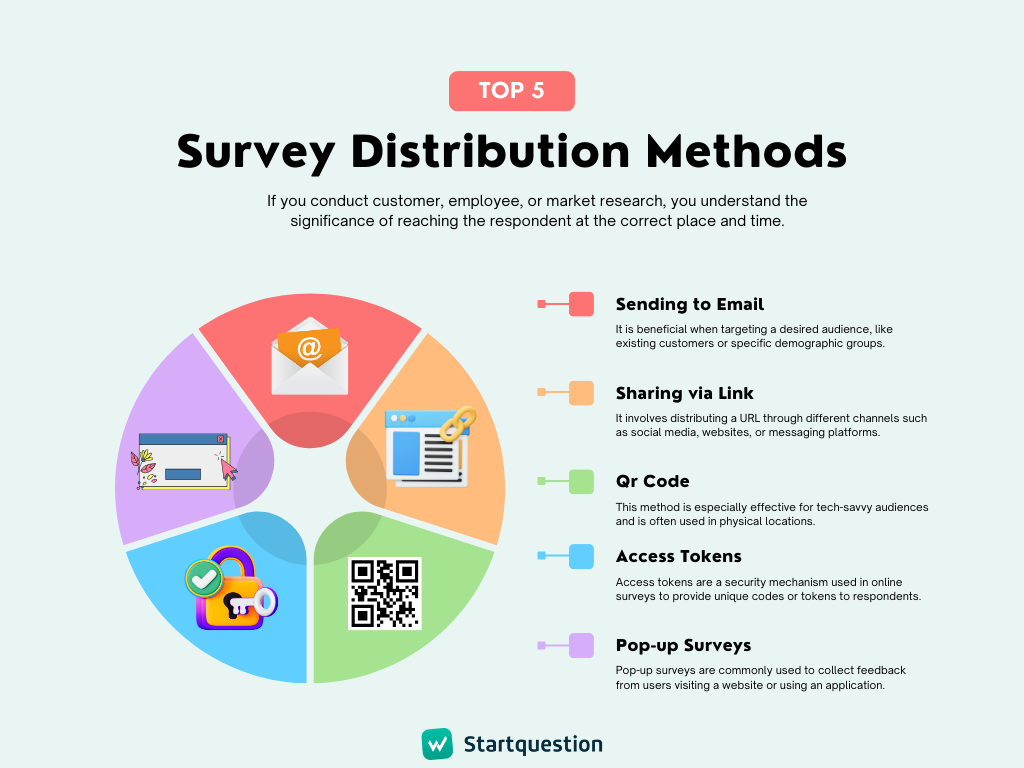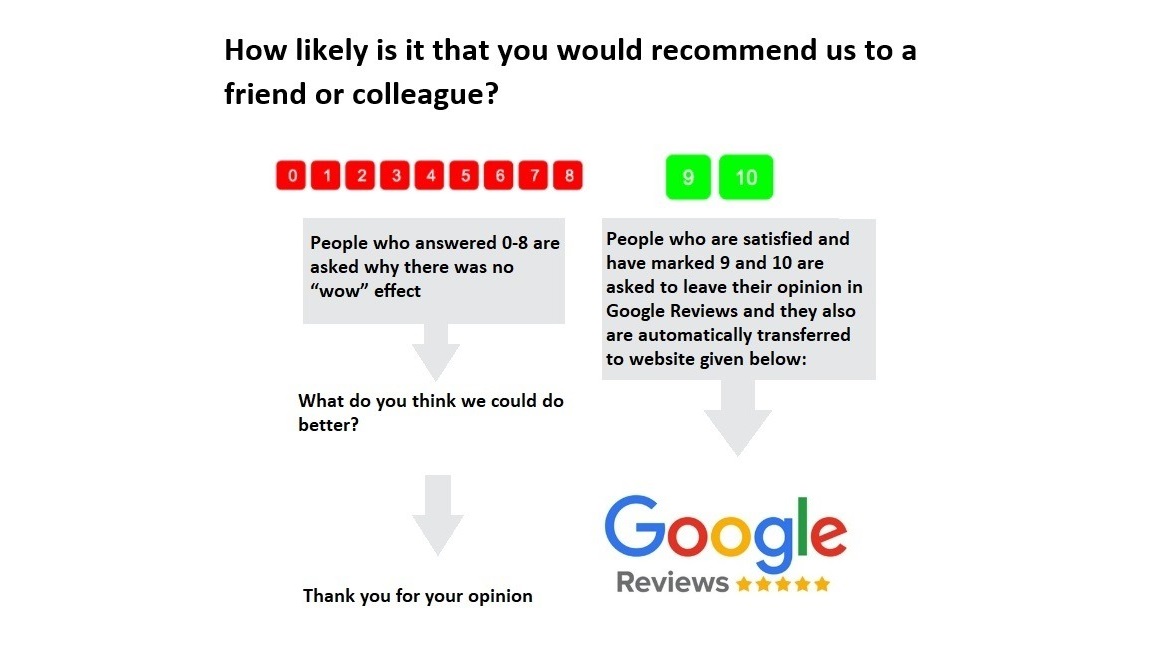Every day, supermarkets, cafés, movie theaters, restaurants, and countless other businesses issue receipts to their customers. But this small piece of paper can be more than just proof of purchase. A well-designed survey link placed on the receipt can gather invaluable feedback from customers. With Startquestion, collecting this data is effortless, and our specialists can help implement the survey in your company.
Read on to:
- Learn when surveys on receipts are most effective
- Explore alternative methods for collecting customer feedback
- Discover good examples and best practices of receipt surveys
- See how Startquestion can support you in implementing them
Who Needs a Receipt Survey?
By now, it’s no secret that listening to customer feedback is essential in 2024. Companies that overlook this are missing out—unless, of course, they are monopolies. Even global market leaders, whose impressive approaches we’ll highlight later, actively seek consumer feedback.
Monitoring customer satisfaction and loyalty, and responding to any red flags, is a daily task for many companies. In some businesses, entire Customer Experience (CX) departments are involved, but it’s the same concept as when a grocery store owner asks regular customers about the quality of potatoes from a new supplier.
Of course, in a large-scale supermarket with thousands of daily transactions and a vast assortment, a direct conversation isn’t feasible. This is where surveys—and the right software to distribute, aggregate, and analyze responses—become indispensable.
An Essential Tool for CX Professionals
For brick-and-mortar retail businesses, CX specialists face a particular challenge: they care about customer contact but often lack the data to send satisfaction surveys. As highlighted in Brandly 360’s report, “The Revolution or Evolution of Customer Experience,” satisfaction surveys are a critical tool, used by 78% of the CX market.
But how can they engage customers who quickly shop at a market or gas station, often through self-service checkouts, before rushing off? The answer is simple: most customers take their receipt with them—and increasingly, these receipts hide a link to a satisfaction survey.
Surveys on a Receipt Will Work Well When:
- You don’t have the data to send online or SMS surveys
- The response rate for other surveys isn’t satisfactory
- Customers are overwhelmed by too many email surveys
- You’re seeking feedback on specific transactions rather than overall experiences
Best Alternatives to Surveys on Receipts
If your company operates online or has access to customers’ phone numbers or email addresses, you have various options for distributing satisfaction surveys, such as SMS, email, website pop-ups, QR codes, newsletters, and even phone calls.

However, when you don’t have access to this data, other alternatives become more relevant. Here’s what you can consider:
Qr Code Leading to Survey
Instead of printing a survey link on every receipt, you can place a QR code at cash registers, hotel reception desks, or restaurant tables. This method works well for younger, tech-savvy customers, but might not reach older customers or those without smartphones.
There are moments in the customer journey when they experience downtime. For instance, at a gas station while waiting at the pump or in line at a supermarket. These moments, when customers are likely to reach for their phones, are ideal for scanning a QR code for a quick survey.
Surveys in the Store App
If you work in the CX department of a large chain store or drugstore, you’re probably well-versed in using promotions, freebies, and contests to build customer loyalty. Many businesses now use loyalty apps that remind customers of their benefits. After a transaction, a push notification can be sent to gather feedback. However, as with QR codes, this method only reaches tech-savvy customers.
The downside is that app users tend to be loyal customers, and their feedback may be more favorable than that of less frequent visitors. Since CX specialists value the insights of less loyal customers, receipt surveys can provide a more balanced view of customer satisfaction.
While loyal customers are valuable, their enthusiasm can be channeled for other purposes—like leaving positive reviews online (Google business card), boosting the brand’s reputation.

Paper Surveys
Though it may seem outdated, paper surveys still have their place in certain settings. For instance, clinics may ask elderly patients to fill out a paper questionnaire. In these cases, it’s important to use a large font and ensure the process is easy and comfortable for the respondent.
Surveys on a Receipt: Real-Life Examples
Are you wondering who the receipt surveys are for? You’re about to find out that the biggest players in the market are opting for this solution. For them, it’s often one of several ways to solicit feedback. It is worth emphasizing, listening to the voice of customers (users) is a multi-channel activity.
However, we will write about this on another occasion. Now let’s get back to the receipts.
McDonald’s CX survey. Take the survey and get the code
The global fast-food chain uses online surveys to gather customer feedback. A unique code is printed on the receipt, which respondents can enter on a dedicated website. After completing the survey, customers receive a discount for their next visit.
This system works well, as McDonald’s also allows customers without a receipt code to participate by entering their visit and order details. To prevent abuse, McDonald’s limits survey bonuses to five per customer, per month.

Home Depot Receipt Survey. Lottery with High Prize
We are moving seamlessly from gastronomy to construction and interior design. US home improvement supermarket chain Home Depot uses a similar solution to McDonald’s. Here, too, customers receive a receipt with data to log in to a satisfaction survey. What motivates them to do so? The high prize looming on the horizon.
The organizers stress on their website that the CX survey takes about five minutes to complete. Respondents are asked to share their impressions of a recent “shopping experience” at one of the chain’s stores. As a reward for their time, they participate in a lottery. The winner receives a $5,000 shopping gift card to use at Home Depot.

Walmart’s CX Survey: $80K for Respondents
We won’t reinvent the wheel by stating that the best way to encourage customers to find their login information on the receipt and then complete the survey is through prizes. The CX specialists at Walmart know this very well, which is why they developed a quarterly lottery program for satisfaction survey participants.
The rules are similar to those discussed above, while the scale of the prizes is impressive. In the third quarter of 2024, the company will allocate $80,000 for prizes (i.e., de facto feedback acquisition) – five grand prizes of $1,000 each and 750 prizes of $100 each. Winners will get gift certificates to use when shopping at Walmart.

Starbucks with Guaranteed Rather than Potential Reward
While Walmart or Home Depot entice with attractive, but nonetheless only winnable prizes, Starbucks, like McDonald’s, offers gratification here and now. For completing a satisfaction survey, customers receive a 50% discount on a beverage of their choice.
The type of reward due to the nature of the business (and the cost of the gratification to the company) is one of the things we look at in the receipt below (it’s in Polish, trust me it’s there). The other is the QR code leading to the survey. So the respondent doesn’t have to read the fine print, search for the right website and then type in the login code, just with one quick scan of the smartphone they can get to the survey.
Very convenient, but the form of distribution of the survey depends largely on the capabilities of the respondents.

Best Practices for Placing Surveys on Receipts
Receipts can sometimes be long and tedious, but including a survey link or code doesn’t have to make them worse. Use a QR code, a simple, easy-to-remember link, or a short number code to make it easier for customers to respond. The easier you make it, the higher your response rate will be.
However, keep in mind that adding anything to a receipt—like a survey—will increase the cost of printing, especially if you place the survey on the front. Printing it on the back is a cheaper option, but less likely to get noticed.
Survey Results Are Not a Goal in Itself
Before we dive into best practices for conducting receipt surveys, it’s important to highlight the most essential practice: the success of the survey—and the entire operation—depends on whether the company leadership truly values it.
“The most important goal of a survey should be curiosity, not the need to hold employees accountable for survey results. We seek feedback because we want to know the honest opinions of customers. If we tie high satisfaction scores to employee evaluations, they may try to manipulate the results. For instance, they might fill out the questionnaire on behalf of customers who didn’t take a receipt or, if multiple entries are allowed, vote several times to inflate the survey result,” explains Piotr Sadowski, CEO of Startquestion.
A survey manipulated by respondents holds no value. Therefore, it’s a good idea to implement security measures to ensure that surveys can only be filled out once. Above all, avoid mixing employee evaluation with customer feedback.
Tip: Some of our clients use customer feedback to improve employee morale. If a particular consultant/salesman collects praise in customer comments, he or she is appreciated by the company. The best feedback is printed and pasted on a bulletin board, making a positive contribution to the organization’s eNPS. This approach also requires securing access to the survey, but at the same time makes employees less fearful of satisfaction surveys, previously associated with a rod rather than a reward.

Receipt Surveys – What Should You Take Care Of?
In addition to the key principle of conducting a good receipt survey explained by Piotr, there are several other factors to keep in mind when preparing a CX survey.
- Reward: Tailor the reward to your company’s capabilities—whether it’s a discount, sweepstakes entry, loyalty points, or a free ebook.
- Simplicity: Both the access to the survey and the questionnaire itself should be clear and easy to complete. The fewer complications, the more responses you’ll get.
- Precision: Define a goal for the survey (and avoid making it about employee evaluation). Stick to that goal. For example, if you want feedback on a new product offering, ask specifically about that.
- Accessibility: Make sure the survey is easy to fill out and accessible to as many people as possible.
- Loyalty: If you have a loyalty program, combine it with satisfaction surveys by offering extra points for providing feedback.
- Communication: Clearly explain the purpose of the survey in its introduction and how the feedback will be used.
- Action: Implement changes based on the feedback and communicate them to your customers. For instance, display results and actions taken on boards in the store. Customers are more likely to participate in surveys when they see that their input has a real impact on the business.
“Let’s remember to publicize the survey, especially if we’re offering a reward or discount for completing it. This could involve playing a message over the store’s PA system, displaying banners in-store, or placing information on the front door or at checkout. Strengthen communication because a QR code with a simple note on the receipt asking for feedback won’t be enough,” adds Piotr Sadowski.
Priceless Data for Marketers
The information gathered through receipt surveys is invaluable not only to CX specialists but also to marketers.
Remember the problem we mentioned earlier? The lack of customer address data that hinders marketing efforts and CX research? Receipt surveys can solve this problem.
“A sweepstakes, a discount on future purchases, or even a simple request to leave an email address for promotions and news—these can all be added at the end of a receipt survey. This gives marketers a powerful tool for building a customer lead base, particularly for offline businesses like bakeries or stationery stores, where it can be difficult to collect email addresses,” explains Urszula Kamburov-Niepewna, Marketing Team Leader at Startquestion.
We Can Help You Implement Receipt Surveys
Let’s be honest—designing and printing receipts with survey links, collecting feedback, analyzing the results, presenting conclusions, and making decisions based on them is hard work. Especially for someone who isn’t technically inclined or doesn’t have the time to dedicate to such a project.
We understand that, and we won’t leave our clients to face this challenge alone.
“Startquestion is not only software, but also a full-service agency. We’ll guide you through the entire process of generating QR codes, contacting receipt providers, and integrating systems to ensure reliable data transmission. We’ll work with you to build the project, so you’re never left on your own with just the tool. We have the technical expertise and will oversee the entire implementation,” emphasizes Piotr Sadowski, CEO of Startquestion.
Why Startquestion? Comprehensive CX Survey Tool
We are a comprehensive customer survey platform. Our intuitive interface, vast collection of ready-made survey templates, and ability to personalize questionnaires make it easy to collect feedback. We also offer automatic email reminders, centralized data collection, and efficient analysis—enhanced by AI support—so you can quickly generate clear reports and share findings within your organization.
But that’s not all. When it comes to receipt surveys, we’ll ensure the following:
- Dedicated QR codes for each location (e.g., every market in your chain);
- Editable short links leading to the survey;
- Inclusion of store location details in the survey data;
- Assistance with setting up large-scale surveys;
- Professional support from our highly-rated customer service team.
And much more.




